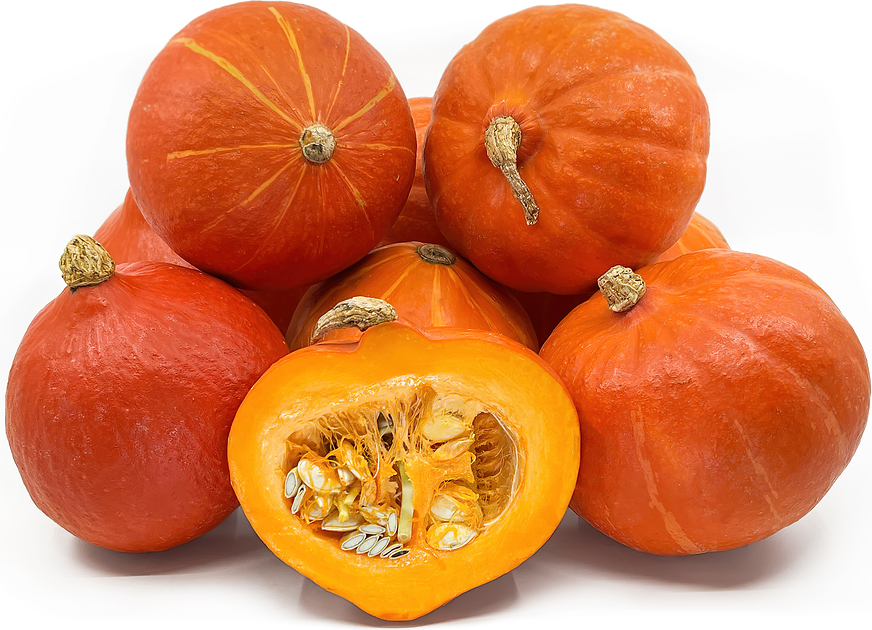


Japanese Sweet Chestnut Squash
Estimated Inventory, lb : 0
Description/Taste
Japanese Sweet Chestnut squash is a vivid orange-red squash with an onion or teardrop-like shape. It features a short, light brown hard stem. Each squash grows to around 10 centimeters in diameter, and 10 centimeters in length. It is considered to be a small-sized squash, and will reach a maximum of 2 kilograms in weight. The skin is typically ridged, but so thin that it may be cooked and eaten along with the inner flesh. When cut open, Japanese Sweet Chestnut squash has a dense, dry flesh that is yellow-orange in color. Each squash features a central cavity where there are many flat, cream-coloured seeds. The flesh is stringy towards the cavity but is easily removed with a spoon. When cooked, the flesh becomes velvety-soft and tender, and has a rich, flavour that is liked to a combination of roasted chestnut, sweet potato and pumpkin.
Seasons/Availability
Japanese Sweet Chestnut squash is available in the late summer and fall months.
Current Facts
Japanese Sweet Chestnut squash is botanically classified as Cucurbita maxima. It may also be referred to as Red Kuri squash, or simply Kabocha squash. The word 'Kuri' in Japanese means 'chestnut', and refers to the squash's flavor. Japanese Sweet Chestnut squash comes in many varieties such as Hokkaido and Uchiki.
Nutritional Value
Japanese Sweet Chestnut squash is rich in beta-carotene and contains vitamin A, vitamin C, calcium, potassium, and iron.
Applications
Japanese Sweet Chestnut squash is best used cooked. It may be baked, boiled, stewed and steamed. It can be pureed and used in soups, or in desserts like pies. In Japan, it is typically stewed in a Dashi sauce along with soy and sugar, before being served with a dash of sesame sauce.
Ethnic/Cultural Info
Japanese Sweet Chestnut squash are extremely popular in Japan, where unusual shapes, colors and varieties of all vegetables are appreciated. Japanese Sweet Chestnut squash are considered to be a staple food in the regions of Kaga and Hokuriku.
Geography/History
All squashes originated in Central and South America, and were brought to Japan in the 1700s. Japanese Sweet Chestnut squash was bred in Japan, and was derived from Hubbard squash. It has been cultivated in Japan since the 19th century, and crossed over into Europe around the 1980s. It has been adopted there with some fervor, and is a favoured variety when it is in season.




